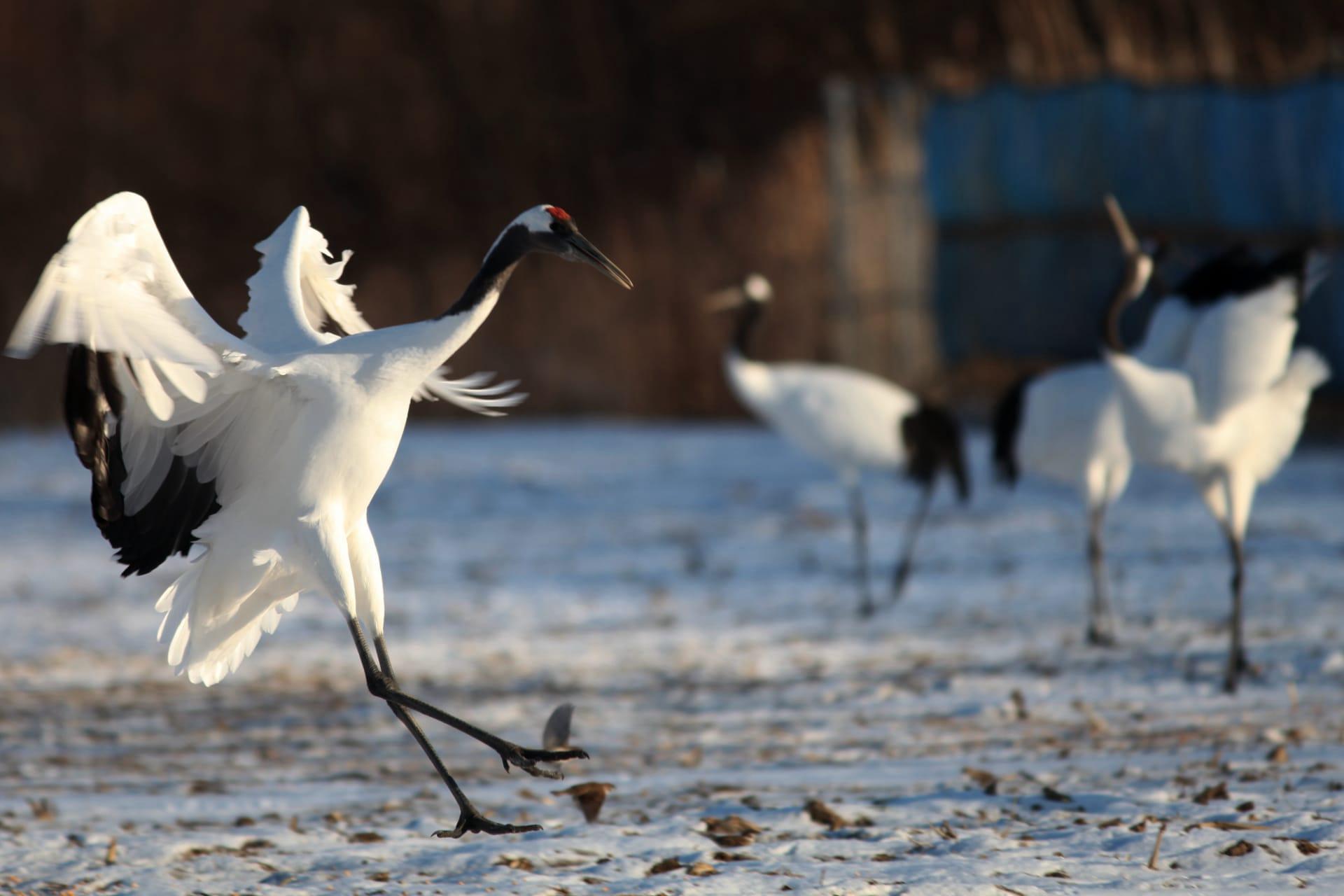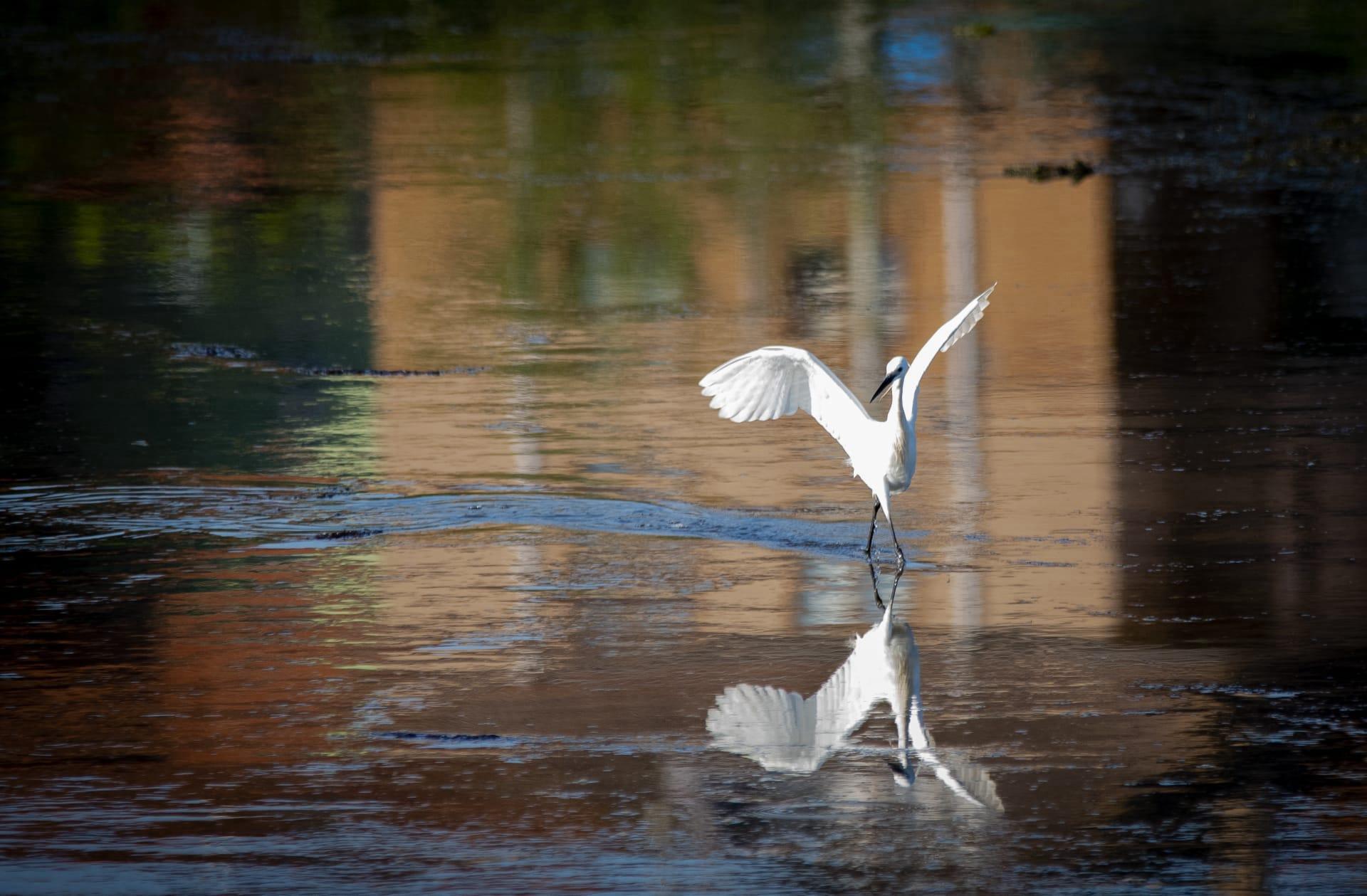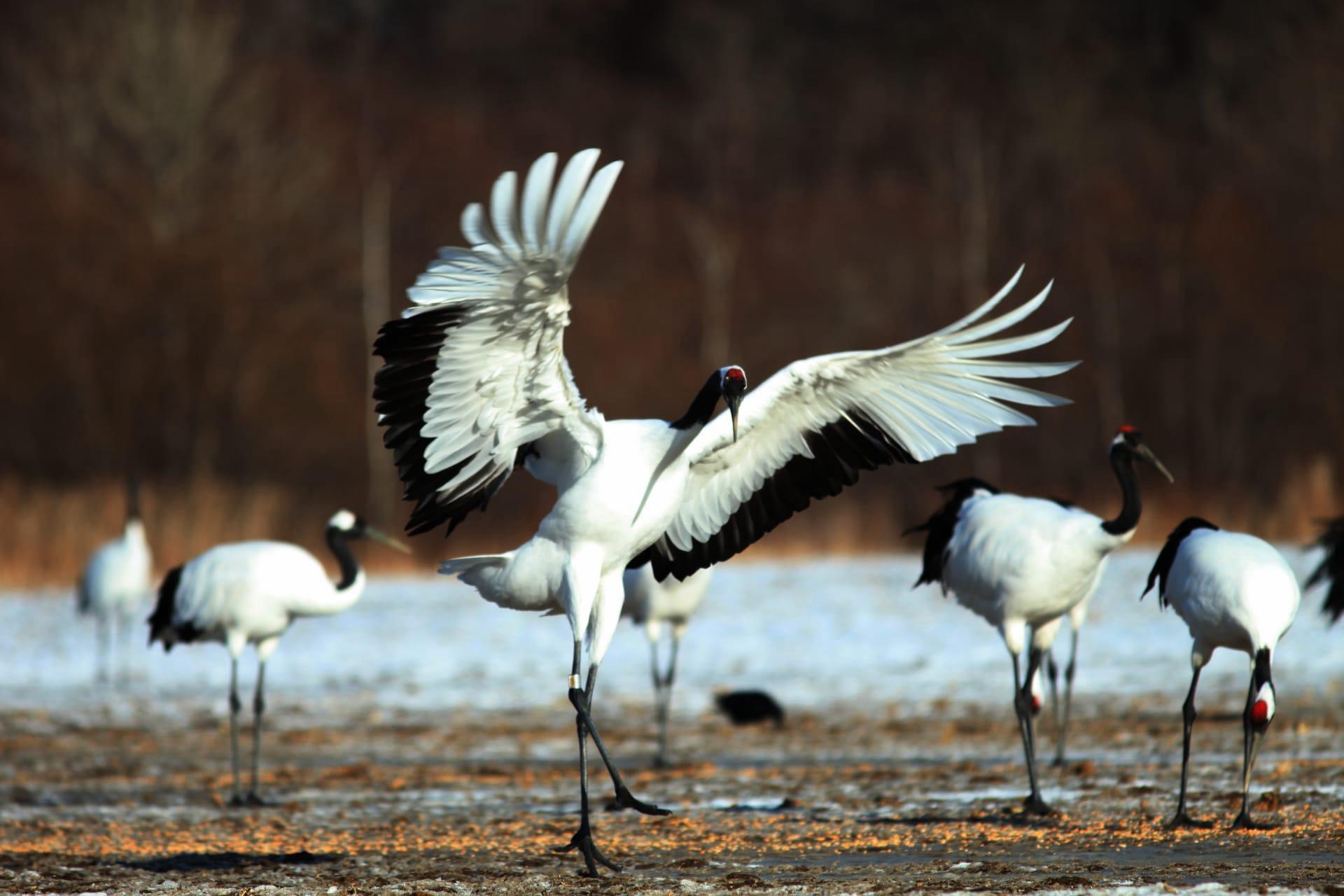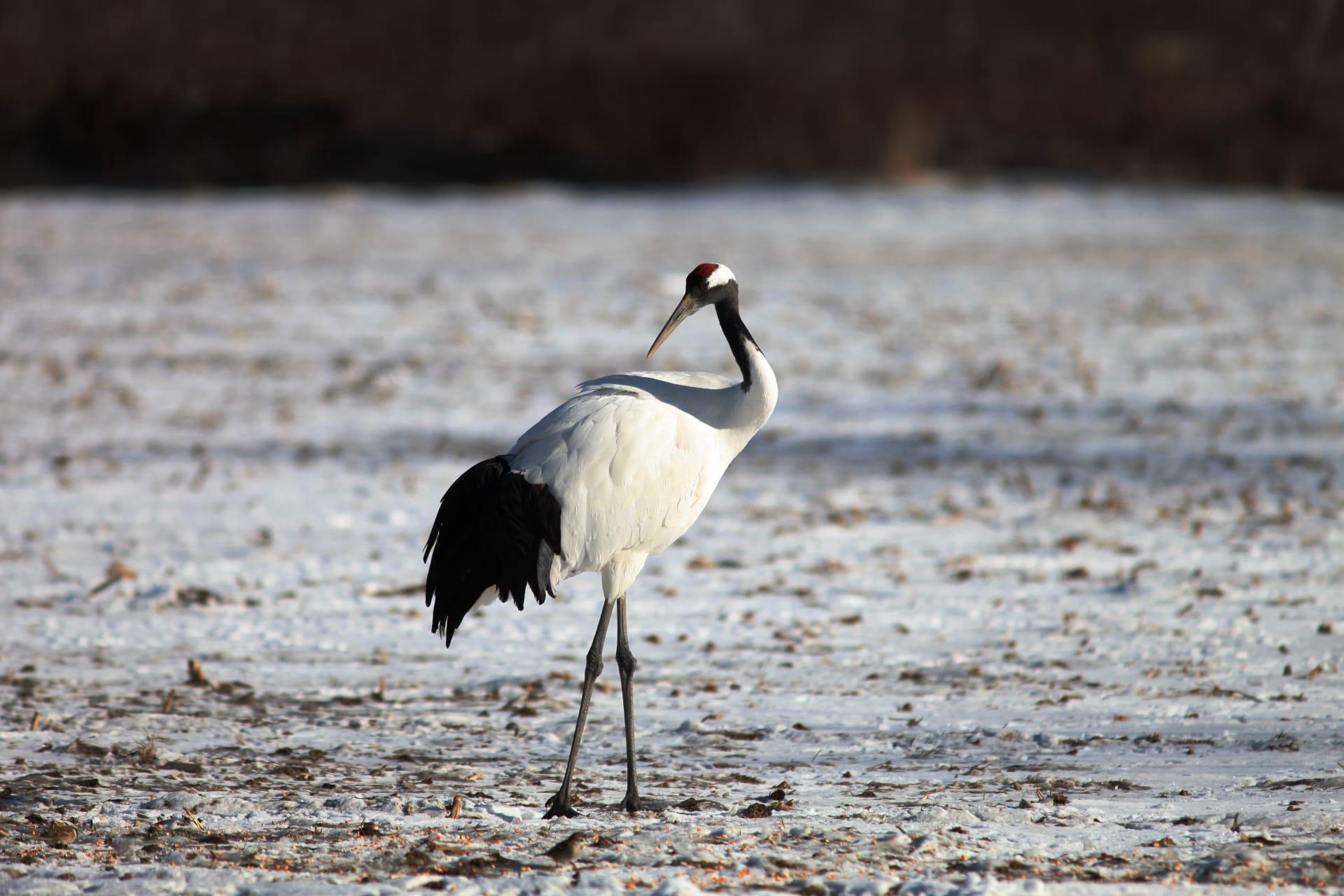Crane
- Home /
- Mini Encyclopedia /
- Animal /
- Crane
1
Crane species, belonging to the family Gruidae, are a fascinating group of large birds known for their elongated bodies and long legs. There are 15 recognized species of cranes, categorized under four genera: Grus, Anthropoides, Bugeranus, and Balearica. Among the most recognized species are the Common Crane (Grus grus), known for its remarkable grey plumage and red crown, and the Whooping Crane (Grus americana), famous for its striking white body and loud, whooping calls. The Siberian Crane (Grus leucogeranus), with its snow-white feathers and black flight feathers, is another species that captures the awe of bird enthusiasts.
Crane distribution spans across five continents, showcasing their adaptability to diverse habitats. These birds inhabit a range of environments from wetlands and marshes to grasslands and agricultural fields. The Eurasian continent is home to several species like the Common Crane, widely spread across Europe and Asia, and the Demoiselle Crane (Anthropoides virgo), which migrates impressively from northern Asia to Africa. North America hosts the majestic Whooping Crane, primarily found in the United States and Canada. The Black Crowned Crane (Balearica pavonina) and the Grey Crowned Crane (Balearica regulorum) are unique to the African savannas. Remarkably, these cranes undertake long migratory journeys, with some species like the Siberian Crane traveling over 3,000 miles from Siberia to wintering grounds in India and China.

2
Question: Do cranes mate for life?
Answer: A common misconception about cranes is that they all mate for life. While it's true that many crane species form long-term pair bonds, these bonds can vary widely. Species like the Sandhill Crane (Grus canadensis) are known for their lifelong partnerships, where pairs stay together year-round, engaging in unison calls and elaborate dancing rituals to reinforce their bonds. However, in some species, these bonds may last only for a season or a few years. Factors influencing the longevity of these bonds include habitat conditions, availability of mates, and individual survival. It's fascinating to note that cranes are among the few bird species where both male and female parents actively participate in raising the young, a testament to their cooperative nature in reproduction.

3
Crane survival strategies are as diverse as their habitats. One key strategy is their diet flexibility. Cranes are omnivorous, feeding on a variety of items ranging from plant material like seeds and berries to small animals like insects, frogs, and even fish. This adaptability in diet helps them thrive in various environments. Another survival tactic is their migratory behavior. Many crane species undertake annual migrations, traveling vast distances to exploit seasonal food resources and favorable breeding conditions. During these migrations, cranes use thermals to conserve energy, soaring to great heights and covering long distances with minimal effort.
Another intriguing aspect of crane survival is their social behavior. Cranes are generally social birds, often found in flocks, especially during migration and in wintering grounds. This social structure provides safety in numbers from predators. Additionally, cranes have a sophisticated communication system, using a range of vocalizations to maintain group cohesion and warn of dangers. Their loud calls, which can be heard over long distances, play a crucial role in maintaining pair bonds and coordinating with the flock.

4
In ecosystems, cranes play a significant role in maintaining balance and biodiversity. Their feeding habits contribute to the control of certain animal populations, like insects and rodents, thus impacting the ecosystem's health. By foraging, cranes also aid in seed dispersal, contributing to plant diversity and the overall health of their habitats. Moreover, as indicators of wetland health, the presence and well-being of cranes can signal the ecological status of these crucial habitats.
Crane conservation efforts have become vital due to their role in ecosystems. Many crane species are threatened by habitat loss, pollution, and hunting. Conservation initiatives, such as protected areas and breeding programs, aim to safeguard these magnificent birds. These efforts not only benefit cranes but also enhance the health of ecosystems they inhabit. By preserving wetlands and other habitats, conservation strategies help maintain the ecological balance, supporting a diverse range of flora and fauna alongside cranes.

5
Film: "Winged Migration" (2001, France). This stunning documentary, directed by Jacques Perrin, showcases the incredible migratory journeys of various bird species, including cranes. The film provides a bird's-eye view of the arduous and often perilous journeys these birds undertake across continents, offering insights into their behavior, survival strategies, and the challenges they face in changing environments.
Book: "Cranes: A Natural History of a Bird in Crisis" (2000, Canada). Written by Janice Hughes, this book delves into the fascinating world of cranes, exploring their biology, behavior, and the conservation challenges they face. Hughes brings together scientific research and personal observations to provide a comprehensive overview of these majestic birds and their struggle for survival.
Book: "The Echoing Call of the Cranes" (2018, United States). Authored by Derrick Wilburn, this book offers an in-depth look at the cultural significance of cranes across different civilizations and their symbolic representations. Wilburn combines ornithological information with historical and cultural perspectives, making this book a compelling read for both bird enthusiasts and those interested in cultural anthropology.